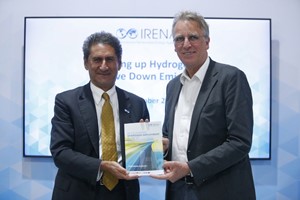News
IRENA calls on G7 to ramp-up a global green H2 market
G7 members can be the front runners in low carbon and green H2 deployment, a new report by the International Renewable Energy Agency (IRENA) concludes. Overall, the consumption of H2 by G7 countries could grow between four and seven times by 2050.
Published at the UN Climate Change Conference COP27 in Sharm El-Sheikh, “Accelerating H2 Deployment in G7: Recommendations for the H2 Action Pact” sees some of the most favorable conditions like access to capital, presence of heavy industry, availability of renewable sources, existing local green H2 industry and technical know-how in G7 countries.
The commitment by G7 to reach net zero emissions by 2050 will require a significant deployment of green H2. This also center-stages the decarbonization of end uses and hard-to-abate sectors like chemical production, steelmaking, long-haul aviation and shipping. Continuously low renewable power costs have made green H2 an attractive, if not the only decarbonization option.
IRENA’s Director-General Francesco La Camera said, “G7 has a sizeable economic footprint, accounting for 30% of global energy demand. Through joint action and focused collaboration, it can be a first mover and determine the conditions of a future H2 market in line with the H2 Action Pact.”
He added: “Policymakers must also show leadership by sharing knowledge, finance and policy know-how with the international community to replicate opportunities and best practices everywhere else in the world. Crucially, with international co-operation, the emerging H2 market has the potential to be more inclusive, with opportunities for developed and developing countries alike. Clear intent must be broadcast, to signal confidence to investors and industry.”
The new report encourages a G7 framework to align policy making and make concrete commitments to harmonize H2 standards and certification, share lessons from early implementation, balance the focus on supply with demand creation, promote H2 uptake in industrial applications and conduct more targeted collaboration with industry stakeholders and civil society.
While G7 has the potential to consume around 28% of global H2, the aggregated H2 demand for G7 members was about 24.2 MMt of H2 in 2020, mostly from fossil fuels. The U.S. was the largest consumer in G7, closely followed by the European Union.
Out of the 65,000 H2 patents filed globally between 2010 and 2020, G7 members accounted for 50% with two-thirds coming from Japan. Of the G7 members, the European Union as a whole and Germany aim to become technology exporters, building on their industrial development. By the end of 2021, roughly half of all electrolyzer manufacturers were in Europe.


